
The launch of The Legend of Zelda: Skyward Sword HD is one of several Zelda-themed releases in 2021 to coincide with the franchise's 35th anniversary, and this new version has got us thinking back over the many entries in the series and the memorable moments we've spent with each and every one.
To tie in with the Skyward Sword HD competition we're running in collaboration with the lovely people over at Nintendo UK until 19th July (UK only), below you'll find a collection of the most treasured memories from the Zelda series, as recalled by members of Team Nintendo Life.
Subscribe to Nintendo Life on YouTube841k
Feel free to share your own Zelda memories in the comments below or on social media using the hashtag #ZeldaMemories and mentioning @nintendolife if you fancy a chance to win a rather lovely Skyward Sword HD bundle...
Ocarina of Time (N64, 1998)
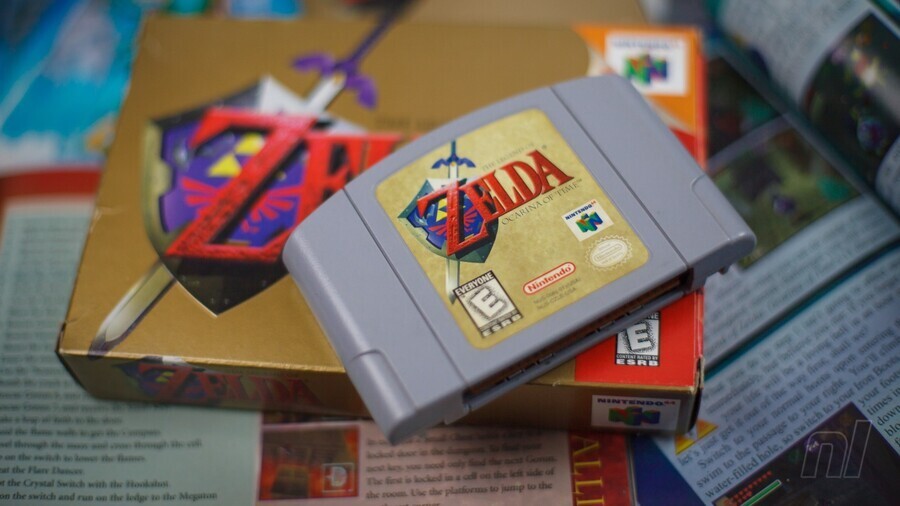
As most of us have, I've got great memories of practically every Zelda game I've played, and after dutifully letting other members of the team claim their picks for this feature, I was amazed to see Ocarina of Time still available. Perhaps everyone was too polite or just assumed it had been snapped up already — regardless, it's mine now!
In a game filled with memorable moments (especially for me, as Ocarina was my first Zelda game), I think I'll have to overlook the wonderful introduction in Kokiri Forest and pick the sunrise over Lake Hylia as a standout memory. The way the game's artists captured that dewy morning feeling as the sun gradually burns away the mist hanging over the lake every morning was a real watershed moment for me; a moment when I realised the incredible possibilities that lay ahead for artistry and expression in video games, in addition to all the stupid-fun stuff.
Great game, great series. Shocker!
Gavin Lane, editor
Phantom Hourglass (DS, 2007)
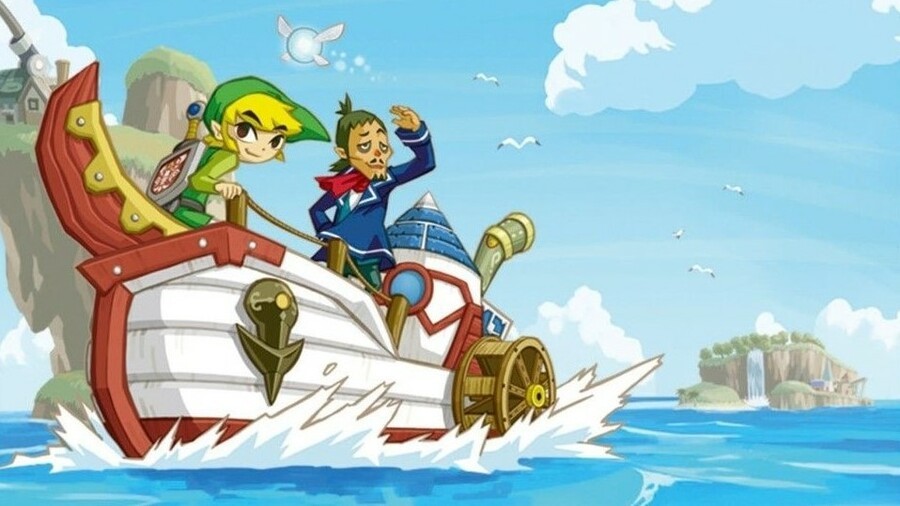
The Zelda games often feel like precious artefacts that have been set in stone, so playing Phantom Hourglass was wonderful — it's incredibly irreverent about its own history. Link's "ITEM GET" animation gets interrupted and misused over and over again, your companion Linebeck's an awful treasure-hungry coward, the mysterious Old Man is an eccentric weirdo, and all the races that you meet in the game (at least, the ones who aren't trying to kill you) are gentle, friendly goofballs.
It draws a lot of its story and setting from The Wind Waker, but my lasting memory of Phantom Hourglass is how warm and silly it is, and how we don't necessarily need every Zelda game to be Mega Serious to be great.
Kate Gray, staff writer
A Link To The Past (SNES, 1991)
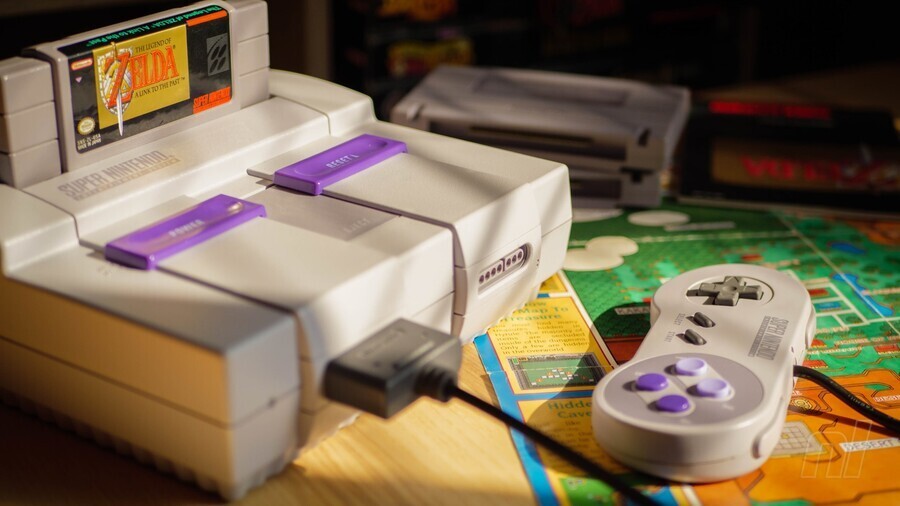
The Legend of Zelda: A Link to the Past’s map blew my mind in 1991.
Yes, there’s probably lots of other things I could rant about when it comes to Zelda, but a full thirty years later and the one thing that always comes to mind when I think back on my time with this series — above all the Bokoblin kills, boss battles and Breath of the Wild exploring — is the map in A Link to the Past. Back in 1991 there just had never been anything like it, at least not to my impressionable young mind.
For the first time ever I felt like this crucial part of a game, one which had always came across as separate, cold and utilitarian, felt integral to my experience, a living breathing part of the game that helped me, guided me, changed and morphed as my actions affected the in-game world. It looked well snazzy for the time, too, with all its spinning and twirling. When I think about this series, I think about that iconic map.
PJ O'Reilly, reviewer
A Link Between Worlds (3DS, 2013)
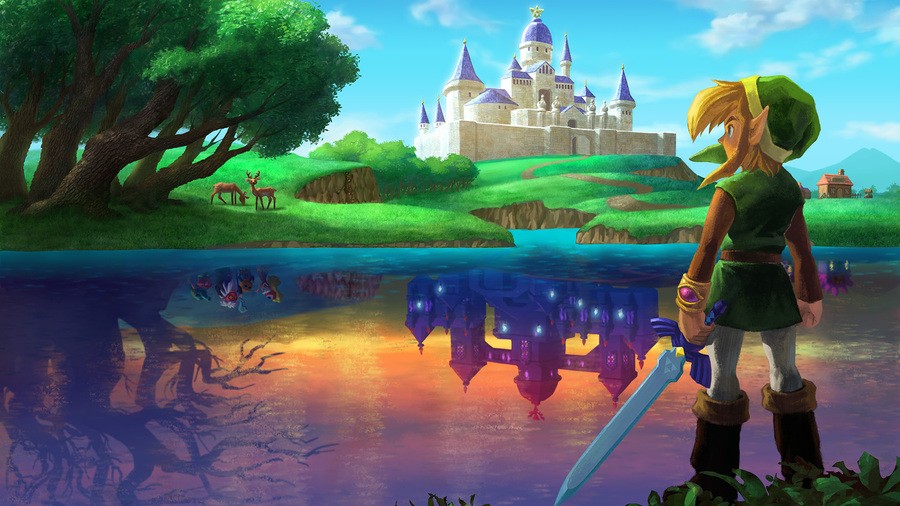
A Link To The Past is one of those games that feels responsible for cementing my love for video games, so when A Link Between Worlds was announced as a ‘loose sequel’ I immediately anticipated its release.
I fondly remember falling in love all over again with this depiction of Hyrule but this time in glorious 3D. It is easily forgotten just how powerful that 3D effect was, but for me the whole game was a stunning example of the 3DS’ unique ability with so many little moments of magic sprinkled across a simply unforgettable adventure for our hero Link.
Ant Dickens, managing director
Link's Awakening (Game Boy, 1993)
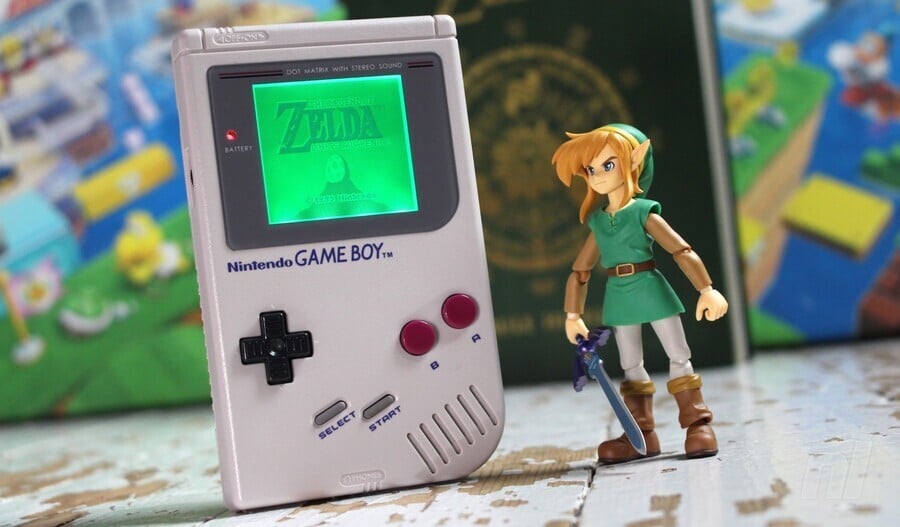
Link's Awakening was my first Zelda game. The only Nintendo system I owned at the time was the Game Boy Pocket that is currently on the shelf above me as I type this, and I absolutely took the fact that Nintendo squeezed an entire Zelda game onto this for granted, or at least I did before I finally acquired all the Instruments of the Sirens and followed the game’s direction to the Wind Fish’s Egg.
I’d already worked out long before in my tiny young brain that I needed to use the Ocarina to open up the egg, and did so each time I got a new instrument (often more than once because the music was an absolute jam). I don’t know how many times I’d visited that egg before but finally approaching it with all eight instruments I’d assumed nothing would actually happen — nothing had done before, after all. Even though the game had literally told me what was going to happen, when the music finally finished and the egg broke open my seven-year-old self was absolutely floored. The Wind Fish’s Egg was open at last, and I’m not ashamed to say I was utterly terrified of entering it. I had no idea what was on the other side, would I be able to get back if I went in? Was I even supposed to be able to do this? Had anyone ever managed this before?
Obviously yes, but regardless I don’t think I’ll ever be able to capture that ambivalent cocktail of horror, confusion, joy, relief, and wonder ever again. Call it nostalgia, because it certainly is, but games were definitely more fun when I was a tiny idiot human.
Alex Olney, video producer
Twilight Princess (GameCube / Wii, 2006)
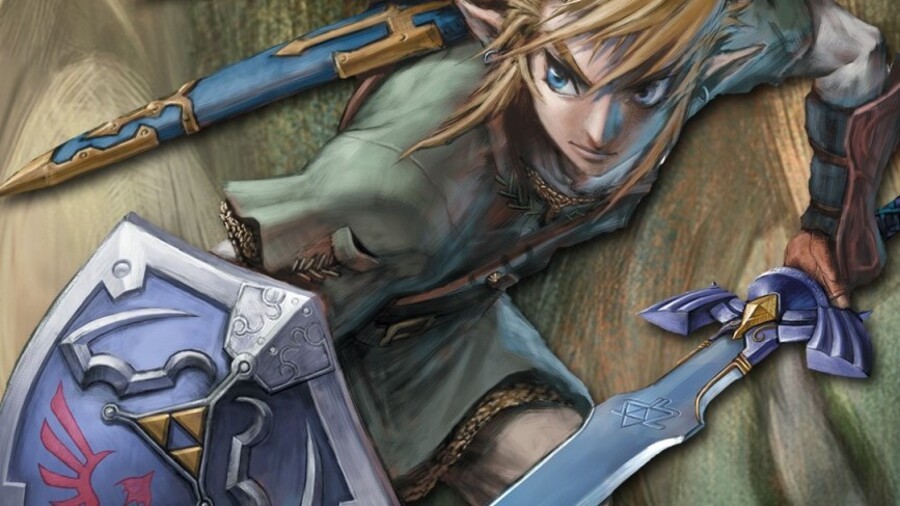
In just about every Legend of Zelda adventure, Link has some sort of companion to help him, Perhaps the most famous is Navi from Ocarina of Time, but for myself, I've always thought of Midna as #1. It's her moments in Twilight Princess that were the highlights of this particular entry in the Zelda series, for me.
Probably the standout moment (spoiler alert!) was at the very end of the game when we see the princess of the Twilight Realm returned to her true form. She says her goodbyes to Link and Zelda and breaks the Mirror of Twilight with a single tear before returning to her own realm forever. It's certainly a sad moment in the history of the series. Obviously, her character development (in creature form) up until this point in the game was also amazing, and yeah... that's why her story in Twilight Princess will always be a standout memory for me.
Liam Doolan, news reporter
The Wind Waker (GameCube, 2002)
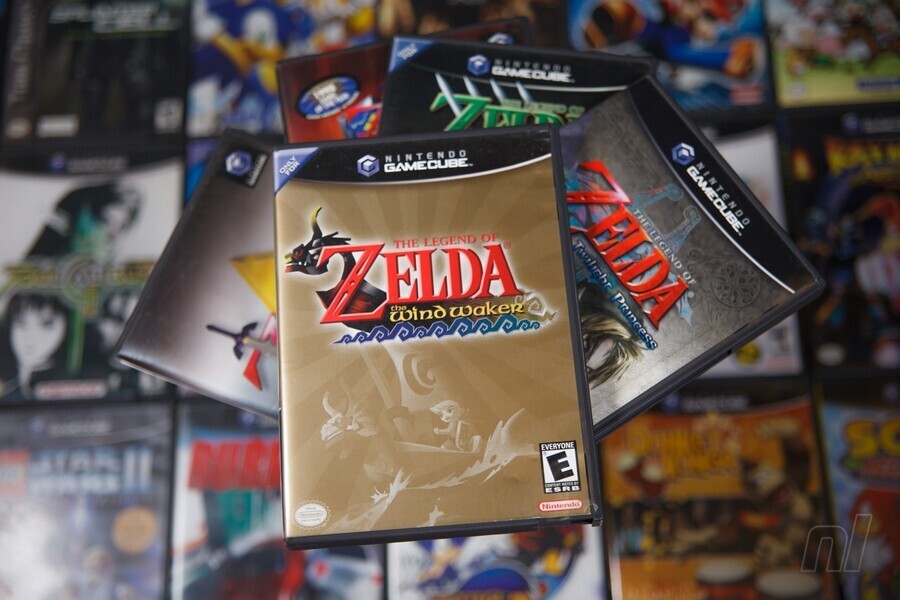
Wind Waker was my introduction back into Zelda games since I played Link to the Past to death during my high school years. Due to the distractions of university, I’d not played many video games for years until I picked up a GameCube and shortly after Wind Waker. I was totally blown away by the cel-shaded art style at the time, it really did feel like a living, breathing cartoon. Every island you visit feels like it’s own little world, full of atmosphere, filled with colour and life. The NPCs you meet along the way are a joy to interact with and some of the side quests are genuinely hilarious.
Of course, this is a sea-faring game and while I enjoyed sailing the open seas back in 2003, I was thankful of the Swift Sail feature in the Wii U’s excellent HD remaster. With a compelling story, charming characters, inventive dungeons and excellent combat, Wind Waker really does feel like a timeless classic.
If you haven’t checked it out yet, what are you waiting for? (A Switch port perhaps?)
Darren Calvert, operations director
The Legend of Zelda (NES, 1986)
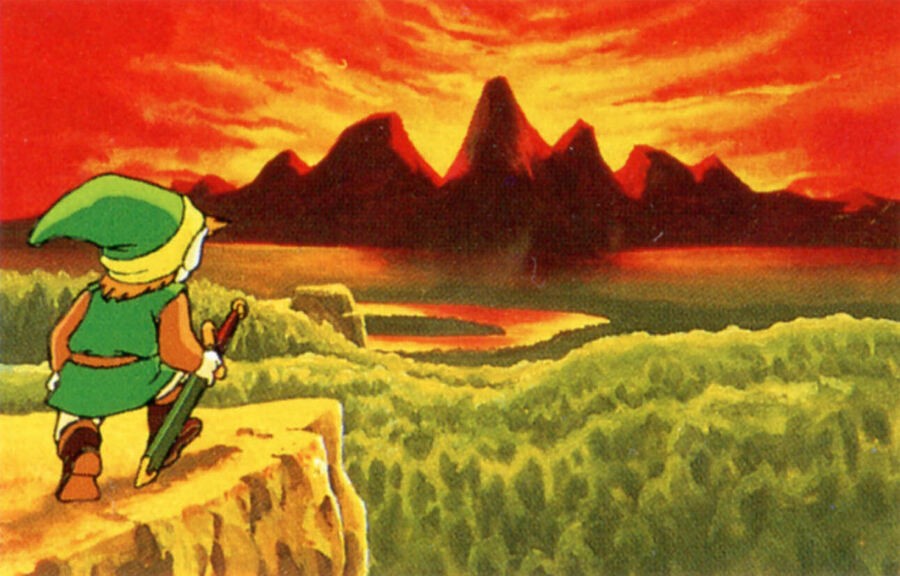
The original Legend of Zelda on NES released many, many moons before I even knew what a game was, but that didn’t stop me from discovering it. My family grew up on the NES thanks to my Grandpa (who still recalls picking it up in the electronics department at our local Sears) and while he had a plethora of classics like Super Mario Bros. 3, Double Dragon II, and Tetris, he didn’t have Zelda. My first memory of the series was with Link’s Awakening, but that quickly sent me on a quest of my own to hunt down the other games in the series that I had been missing out on.
I was probably about seven or eight years old and was out shopping with my Grandma at a local thrift store called Nice as New. Like most kids, I made a beeline for the toy section and movies, and occasionally they had a few video games but nothing caught my eye this time. Thankfully though, Grandma found a few things which led us to the register, where seemingly out of nowhere, as if a light shined down from the Hyrulean heavens, a boxed copy of Zelda on NES was sitting on display and available for purchase at a flat ten dollars (plus the 5.5% sales tax of course!).
I nearly lost my mind and I imagine Grandma nearly lost hers, too, at the sight of me melting on the floor in the moment. Since it was evident I wasn’t capable of leaving the store without it, she was kind enough to purchase it for me even though she probably knew I wouldn’t shut up about it until we got home so I could play. I’m so thankful to have had a family member who encouraged my hobbies the way she did and still does. Without her and The Legend of Zelda, I have no idea what sort of life I’d be leading now, and I wouldn’t change it for a bit.
Zion Grassl, video producer
The Minish Cap (GBA, 2004)
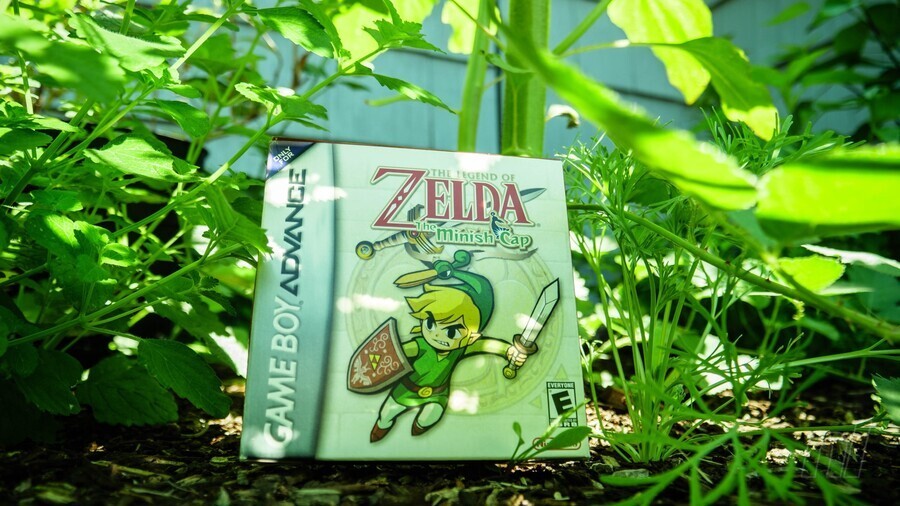
I think I probably speak for a lot of people when I say that Minish Cap came at a rather odd time for me as a Nintendo fan. It launched around the same time the Nintendo DS was released in North America and Japan, so my attention was firmly fixed on this new console and how it would change the way I played handheld games. Yet here was a AAA Zelda game on the Game Boy Advance, the console I was about to abandon in favour of a shinier, more alluring trinket.
Thankfully, the notion of ignoring Minish Cap just because new hardware was looming on the horizon didn't occur to me, and a pre-order was duly taken out. I can't think of a better swan song for the GBA than this game – it truly delivered on the promise of an exclusive portable Zelda, offering gorgeous 2D visuals (every subsequent mainline Zelda game has used 3D visuals), innovative gameplay and an excellent sense of humour. While there's a desire to see older classics get the remaster treatment these days, Minish Cap is one of those unique examples of a game which doesn't need any updating; it's perfect as it is, and well worth a look if you haven't played it already.
Damien McFerran, editorial director
Breath of the Wild (Switch, 2017)
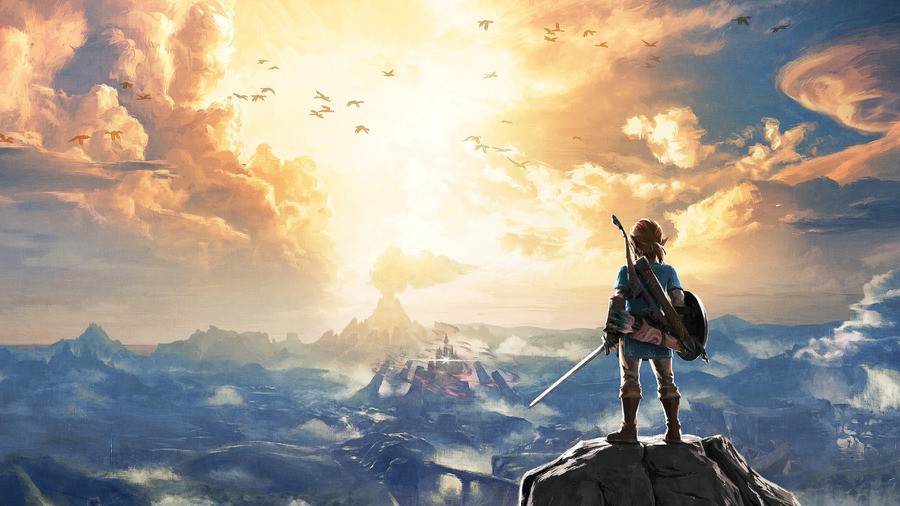
I have a funny memory from my first playthrough of Breath of the Wild, which was actually for review. I had six days in total and knew I simply had to finish the story, so as the hours slipped by I realised I'd have to push for the main objectives. And so I knew I had to reach Goron City, but I was looking at Death Mountain from the Akkala region and thinking "how do I deal with the heat?". You see, in skipping across from Zora's Domain I hadn't been able to fully explore and hadn't seen 'the spot' where you get all-important heat resistant elixir.
As my brother sat watching (he was eagerly awaiting his own Switch and copy that were just days away) I hatched a route across Death Mountain, without any heat-resistant gear. I flew down to a hot spring, then started a frantic dash for what I assumed was Goron City. Lava and rocks were crashing around me, and as my hearts drained I started to frantically eat my supply of meals and look for more hot springs. The heat kills quickly, so as I staggered to the overlook of Goron City I was out of meals and low on hearts. I glided down, desperately swooping into the first building I saw; amazingly, it was the shop. In a brilliant touch, the Gorons looked shocked and said "How did you get here?!". I bought up all of the armour — which I could just afford — and equipped it in the nick of time.
My mad dash had worked, and the fact it was possible, despite the daftness of the approach, is part of what makes Breath of the Wild so darn special.
Tom Whitehead, deputy editor
Majora's Mask (N64, 2000)
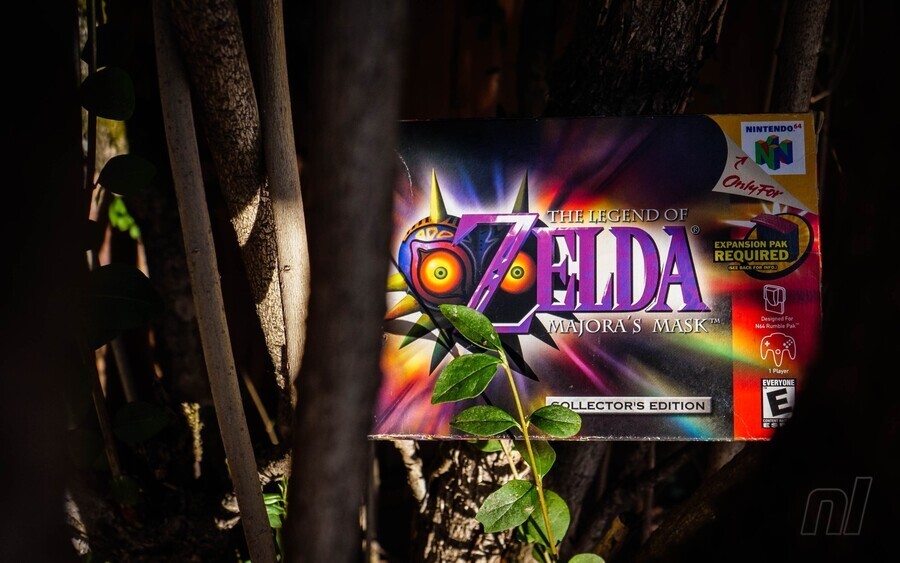
We all remember Majora's Mask for how drastically it shifted away from its predecessor, with its unique setting, the three-day cycle, and a cast of frankly creepy characters. For me, one moment stuck out amongst all others, and not necessarily in a good way: those ruddy Bombers!
Finding those kids at such a young age, without the convenience of the internet to help me, was an absolute nightmare. I still kick myself to this day, because the one Bomber I couldn't find was the one behind the slide in North Clock Town; I must have assumed that because I found the one behind the tree, the others must be in other parts of the town.
In hindsight, maybe that's why it was altered for the 3DS version… Needless to say, I'll never forget where to find those blasted kids again!
Ollie Reynolds, reviewer
Link's Awakening DX (Game Boy Color, 1998)
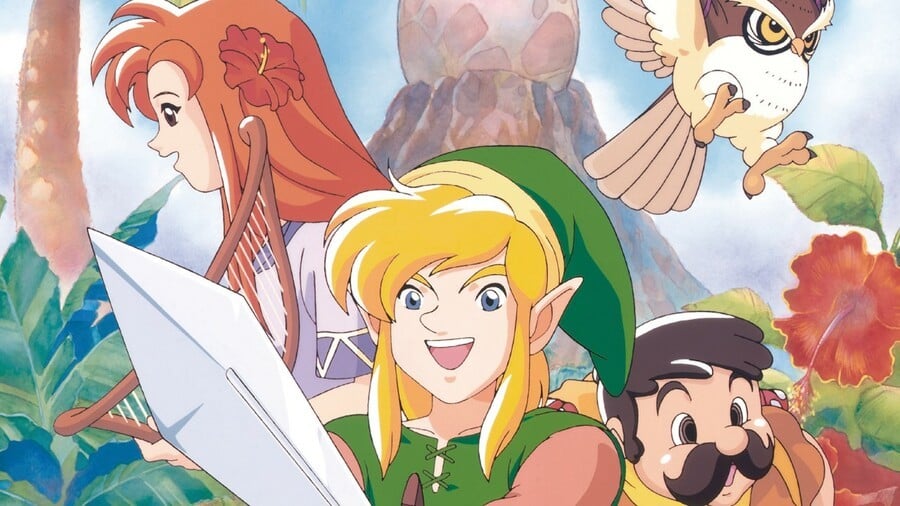
Technically, Link’s Awakening DX is a separate game, so I can write about it too! Hah! Loopholes!!
Anyway, I think the defining moment of this delightfully bizarre masterpiece (now in glorious colour) remains that beautiful first sighting of a Goomba, fresh out of Super Mario. In a game that’s all about pushing boundaries, this remains its most marvellous surprise.
But then again, is it? After all, the Roc’s Feather lets you jump into the air à la Nintendo’s flagship tradesman – surely it stands to reason that you’d run into a Goomba or two. But no, they are not of this world.
Hmm, bit of thematic resonance there, don’t you think?
Stuart Gipp, reviewer
Skyward Sword (Wii, 2011)
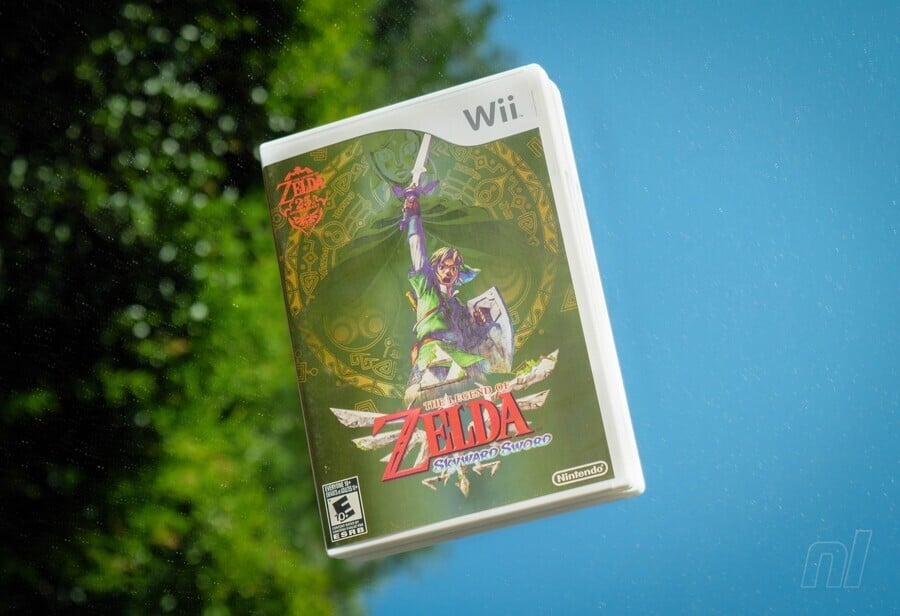
The Wii went its entire life cycle riding on the back of GameCube's swansong. Twilight Princess was a fine game, it just wasn't one for Wii to call its own.
In retrospect, I'm glad it took so long to deliver Skyward Sword. The motion controls may be divisive, but to this day there's nothing quite like them and it truly elevated Zelda's combat to a place it hadn't been since Zelda II. Like most other franchises, Zelda innovates and refines itself but each one has a unique quality to call its own that cements it in history — love them or hate them, the controls of Skyward Sword are its identity. I went the entire adventure enamoured by the precision they offered and the game uses its combat utility to enhance both dungeon and puzzle design.
Nowhere is this more evident than the Ancient Cistern, one of the greatest Zelda dungeons ever made. I'll tread lightly to avoid spoilers for the new remaster, but let's just say Zelda's never afraid to get a little dark. This is all topped off with one of the most satisfying boss takedowns in the entire series and it just wouldn't work without the controls. Ancient Cistern is a pure joy.
Jon Cartwright, video producer
Well, those are our Zelda memories, but what about yours? Let us know your own treasured #ZeldaMemories below, or on the social media platform of your choosing, obvs — don't forget to tag @nintendolife!




Comments 74
Has to be the moment in a link to the past when you reach the dark world for me
Entering Gerudo Valley for the first time in Ocarina of Time and hearing that music... 🤯
Ha, I will never forget when I played OC.... and when't into the temple that I could only call PAIN I still hate the water temple to this day, But love the game, oh and Majoras mask was just a work of art.
Oh right the memory, It has to be the music I first heard when I went into the forest, I will never forget it, That and the song of storm's, I just will treasure those memories forever.
My earliest memory of Zelda (I was about 11/12 at the time) was watching an old school friend playing this strange looking platform game where his character swung a sword, at head height, or knee height. He was in a palace, apparently, and having difficulty killing the "boss" of said palace, asked if I wanted a go. So I did. After getting to grips with the combat, and being delighted that pushing down in mid-air made the character stab downwards, I managed to kill the boss. Barba, its name was. Big dragon thing. Pain in the ass to kill. But kill it I did. I knew I needed to carry on playing this game, so my mate and I teamed up to carry on. Never did finish it, mind, and the Nintendo Hotline was useless when we rang 'em. Didn't have the maps, it seemed 😂.
It was Zelda 2, it was my first Zelda, and I still love the thing today.
Nice Read 💯
My oldest and favorite memory was playing the original on the NES with my late Aunt. She got me into gaming when I was very young. Whenever we got stuck, we called the Nintendo Hotline for help. Those were good times.
My most favorite zelda memory isn’t even in game. It’s what really got me into the series that is now my favorites. I was in my 20s with not much money but had a great group of gaming friends. One friend was buying the Wii at launch w/ twilight princess and we all went with him to Walmart at and waited in line. After he got it withe twilight princess we went back to his house and watched him play through the first 4 or 5 hours.
I knew that night I HAD to buy a Wii and play twilight princess myself.
I remember getting lost on hyrule field in ocarina of time - that feeling of isolation and grand scale. Here I am running around this massive field and my home village being so far away. It seems negligible now, given how big the hyrule map is in breath of the wild. But 12 year old me, playing oot on my trusty n64, late at night - I’ll never forget that feeling. Truly magical.
There's a lot of great gaming memories tied up in these games - but for me, even though it's not the best, the one that really sticks out is transferring the map from one screen to the other in Phantom Hourglass - that's the sort of thing that really sticks with you.
I don't know if I have a particular treasured memory for Zelda, but playing (and re-playing) A Link to the Past, Ocarina of Time and A Link Between Worlds always brings a smile to my face. In fact I just finished a replay of Ocarina the other day, that final battle with Ganon is still epic.
My least treasured memory is probably playing Breath of the Wild and realising the series is going in a direction that just isn't for me anymore.
Pulling the Master Sword from its pedestal in the Temple of Time in OoT. Flash forward to adult link and a bad future Hyrule. Childhood innocence gone, time to bring the pain to Ganondorf!
Its sad that everyone forgets about Four Swords Adventures for the GC. I have some great memories of me playing with 3 friends on our little GBA screens connected to the GameCube. Fighting for rupees. It was pure chaos. I loved it.
But my favorite was opening my Christmas gift from my parents… Ocarina of Time. I was so thankful to my mom and dad that night.
@bulkslash ive seen more and more people being disappointed with BotW as the time passes by. And I’m starting to feel that way. The only Zelda game I haven’t replayed ever.
I really hope we go back to the old formula after the sequel comes out.
I think my favourite Zelda memory is when I first saw a dragon crossing the sky in Zelda BotW. That feeling of awe...
In Ocarina, the moment Darunia breaks into dance when you play him Saria’s Song. As a 10 year old at the time, seeing that was pure joy - I was in genuine fits of laughter. That game will always hold a special place.
A couple of memories that come to mind are, in Ocarina of time there is the cut scene when Gannandorf kidnaps Zelda which filled my desire to save her and really set the scene for the whole game.
The other is a little random and from Link to the past, 'back in the day' we didn't have the guides the same and I had been playing the game for quite a long time and got stuck, so much that I ended trying to find what to do to move on. Well I thought I was doing well and was somewhere near completing the game, needless to say I was only about a quarter of the way through the game!
When I was a tiny, my mom would hide birthday gifts and play hot and cold to find them. We had an NES in the basement and I was enamored with Mario and Tetris but for the third or fourth birthday, I got my own game, and it was a shiny gold cartridge called Zelda. Turning that game on, seeing the story scroll by and reading that the villain had a very familiar name, and hearing the overworld music for the first time all stand out in my memory after all this time.
One day when I was still a tiny I was just watching a plumber doing work in the basement and he looked over and asked, “That a Nintendo?” Yup. “Got Zelda?” Yup. “Let me show you something” and that’s how I learned the locations of every heart container and the magic sword.
I never actually cleared the game until I was eleven. I still don’t know if I had a predilection toward fantasy stuff back then or if the cart just stood out to my mom because of the color.
Runner up: there’s a moment in Twilight Princess where Midna actually kind of acknowledges to Link that, yes, this is really hard and she appreciates his efforts, and he shouldn’t have to do all this. It’s a once in a series event.
Getting home from school the day Ocarina of Time came out and my mom had picked up the Collector's Edition from Toys'R'Us that I had preordered and hid it somewhere in the house and I had to go and find it as soon as I got home.
(it was hidden behind the hamster cage)
I’ve had some many great memories with the series, up to and including Breath of the Wild. But for me Ocarina hit at the perfect time, the 3D looked incredible, I was sucked into the world, and the scope and feel we’re mind-blowing everytime the game revealed something new!
This is the story of how I beat Breath of the Wild:
It was 2019. I had been playing the game on and off since close to launch, and had no intention of finishing any time soon. One Saturday morning, my then 5 year old daughter was watching me play (which was not unusual - she really liked Zelda). She made suggestions from time to time about what I should do (climb that mountain, swim across that lake, go over there I want to see that thing, and other stuff like that). Due to the open nature of the game, I was usually able to do whatever she wanted. That morning the following conversation took place:
5yo: Daddy, are there any princesses in this game?
Me: Why yes, there is a princess
5yo: Can I see her?
Me: ...no
5yo: Why not? Where is she?
Me: She's at the castle
5yo: Daddy I want you to go to the castle
Me: I don't want to go to the castle. It's scary there
5yo: I want you to go to the castle
Me: I don't want to go to the castle
5yo: Daddy, will you please go to the castle?
Me: ...fine
An hour and a half later she got to see her princess 😂😂
Funny reading Tom’s comment about reaching Goron City in BotW, because that’s how I did it the first time too, lol.
It’s hard to pick a favorite memory, but it was probably beating Zelda II as a kid. Or getting the Master Sword in ALTTP.
Pulling the Master Sword in Link to the Past was my fondest memory. To this day, I get goose bumps and excitement whenever I get to that part in the game. Discovering the fairy fountain that upgrades your equipment was also a joyful experience when I was a kid. I remember exclaiming, “you can do that?!” to my friend when we were taking turns playing when we first encountered it! Good times!!
NINJA APPROVED
Link to the past was great…. But the moment you boot Ocarina of Time for the first time…. Magical. Later when you enter zora’s domain, wow! And Ganon was epic in that game when he started to transform. I could go on and on. Favorite game series for me.
When you get Epona in Ocarina.
For me, it would be Ocarina of Time 3D, specifically the Volvagia fight and final battle (the latter of which I wrote an essay about in class!)
While Link to the Past will always be my favorite (maybe!), I remember loving Wind Waker so much when playing it for the first time. All you heard up to launch was negativity regarding the "cartoony" art style. Even my son and friends were skeptical after playing OOT and MM and expecting a "more-realistic" art style for Zelda. Boy was everyone wrong! It had all the fun, charm, excitement you expect (and should expect) from a Zelda game made by Nintendo.
@The_New_Butler That’s insane!
I can relate to so many of these stories. The Zelda games are all special, and I had great experiences with so many of them, and each for different reasons. Happy new Zelda game day, everyone!
I cannot wait for all the hate from this statement, but seriously outside of a few select games I think the Zelda series of games sucks. Same thing with Metroid.
@Clyde_Radcliffe oh man, that music, with the sweeping shot of the valley, that was amazing. Still probably my favorite Zelda music (especially the 25th anniversary orchestral theme)
I think my most treasured zelda memory is my whole family playing the original legend of zelda at the same time (except me cause I was 3 and didn't understand it) and my mom took the time to help my brother, and to be honest also herself, and made a huge map where each screen of the overworld was 1 half sheet of paper.
I still have that map and it is something I will cherish my whole life.
I have SO MANY MEMORIES with Zelda, but the one that stands the most is with OoT. We played the game together with my brothers, and it was a thrill when we finally got all three spiritual stones and went straight to the Temple of Time with the Ocarina of Time in hand. The built up was epic beyond belief: witnessing what came first as a dream, now turn into a reality, with Link (and us) realizing that there's no turning back and Ganondorf needs to be stopped. Then, when you play the Song of Time, and the Spiritual Stones get aligned, and the Triforce sign on top of the Door of Time shines, and the Door starts to open, that's probably the most beautiful moment I ever experienced in a game. Forward 20 years, and I relived the same moment with my children, they were watching in awe, the same way my brothers and I were back then, and that brought tears to my eyes. It was full circle. OoT is the reason why i love videogames so much.
@BulkSlash
My least treasured memory is probably playing Breath of the Wild and realising the series is going in a direction that just isn't for me anymore.
I'm right there with you. I know Skyward won't outsell BoTW, but I hope it does well enough that nintendo can juggle 3D OoT style, open air botw style and top down classic style, different teams producing each, and get fairly consistent releases
@Bearzilla823
Which game series do you prefer then? And are there any Zelda or Metroid titles you enjoy?
Mine is beating the Tower of the Gods in Wind Waker and seeing what was under the ocean.
I was part of the backlash against Wind Waker's cel-shaded art style. I had just started college and was a HUGE Zelda fan. I hated that something I loved, something core to my identity was being made "childish".
Yet I preordered it anyway to get the Ocarina Master Quest disc. I planned to play that first. My brother was burnt out on our N64 Ocarina, so he opted to play WW instead.
Seeing the cel-shading in motion was magical. The ocean swelled, the trees moved in the wind, the world was ALIVE. I had to play it. And when I saw what was under the ocean I realized that this was going to be a milestone in the franchise and I had been a twit for judging it on its looks.
For me the cornerstone memory is really with the original NES LoZ - playing it on a small TV in the back room, complete with paper map. I was too little to finish it, but my dad did. Much later I finished Link to the Past on GBA and had such an amazing time with it. I certainly have a bias towards 2D Zelda games but I’m getting Skyward Sword today and looking forward to it.
I'll say Ocarina. Rented it around Thanksgiving 98 and then got it for Christmas. Literally didn't leave the house until February and barely got dressed. Just smoked my one hitter and played
I remember getting the original on NES. I think it was the first game I had that had a BATTERY in the cartridge. I played it over and over and would try attacking the levels in a different order each time. It did take some getting used to though, it was unlike any other game at the time...not a lot of open world games back on the NES in those days 😂
I've been with the series for most of my life now, but surprisingly my happiest memories of it come from the most recent mainline entry - Breath of the Wild.
I will never forget the pure magic it was to explore an open world like that. Best of all, I played through most of it with my little siblings watching me. After my college classes were done for the day, I would rush to my parents' house so that I could spend a few precious hours in Hyrule with my little sister and brothers.
The game was fantastic - we loved tracking down the memories and exploring each area of the map - but we also had a lot of fun doing little roleplays with the game. For example, one time we dressed Link up in the terrifying 'Ravio Hat', gave him a squeaky hammer and had him terrorize the denizens of Hateno Village, doing backflips and dropping eggs on the ground like some kind of mad Easter rabbit (complete with a goofy voice I voiced while playing as him). Another time my sister suggested we give Link the Lynel hood, and have him ride shirtless down the slopes of the Hebra peaks, doing tricks and flips and pretending he was a stoic, silent, daredevil called "The Beast".
There were others - a nature safari guide, for example - but it was amazing to have a Zelda game with this much freedom to use our imaginations and come up with fun, engaging ways to play. I don't know if another game will ever top my memories of playing Breath of the Wild with my family.
The series is full of iconic moments, so it's really hard for me to pick; I've played all the main games barring Four Swords Adventures, after all. Twilight Princess was my first Zelda game and has plenty of great scenes, so instead I think I'll go with my first impactful moment. To me, that would be the sequence where Midna's Lament plays. It truly brought home to me how much music can add to the emotional feels of a situation. Midna is an excellently written character (I'd argue the best series companion), and to have her near death after encountering Zant as Wolf Link rushes her to find help....I won't spoil the rest for those who haven't played the game, but what happens next also moves both her and Princess Zelda's characterizations forward.
Before that point, I didn't truly appreciate how emotionally powerful video games could be.
The runner-up for me would be entering the ruined Hyrule Castle Town in OoT after Link wakes up as an adult and seeing all the ReDeads scattered around. THAT hammered home how much Hyrule declined under Ganondorf's boot. Though I didn't play the game until Ocarina of Time 3D graced the 3DS.
Zelda is my favorite franchise and Ocarina of Time made me into a gamer. I had played videogames before, but walking inside the Deku Tree and hearing that enigmatic music was the first time I realized that, wait, videogames can do this, too. They can prioritize mood and make you feel feelings. That blew my young mind.
@Classic603 I’m not alone! 🤗 I totally agree, I’d love an ongoing mixture of each type of Zelda game, I’m certain the market would support it and then everyone can be happy.
I see a lot of people here share my same sentiment, but yeah, my strongest Zelda memories definitely come from playing Ocarina of Time for the first time. I think that’s when I went from a kid who casually played a bunch of snes platformers to someone with a lifelong passion for games. From the lushness of stepping inside the Deku tree for the first time, to the bittersweet feeling of seeing the credits roll after beating the game, the whole experience was absolutely enthralling to my teenage self and really opened my mind to what a game experience can be. I also remember refusing to let my two younger sisters start their own games until I beat it myself, yeah I was a bit of a jerk:p
@Tyranexx
The Zelda series music is always incredible. Midna's Lament, Song of Healing, Zelda's Lullaby, heck even Spirit Tracks has some great tunes. But I gotta say, the orchestrated OST for Skyward Sword is my favorite
It has to be the moment in botw with the master kohga boss fight. I lost my crap! It was not expecting a boss fight, and he was so funny to fight.
Links awakening when you first start to learn about how the island is fake in the face shrine. Also linebeck is the og groose
Man, I don't have the time at the moment, so maybe I'll circle around with a second post. But for now I'll just leave this, which captures my feelings precisely for classic Zelda and all games I played back in the day:
"Call it nostalgia, because it certainly is, but games were definitely more fun when I was a tiny idiot human."
Couldn't have said it better myself, Gavin.
The map from Link to the Past is a great choice. That would have never occurred to me but giving the world more depth and looking less technical as you said. That's one thing that LttP did so well was making the game world seem like a real place instead of just a series of screens and levels.
For me, the most enduring moment of that game was the shift to the Dark World. It took me a long time to get there. I spent most of my time wandering around the world, exploring everything and avoiding the dangerous quest. When you get the master sword and take on Agahnim you think it's the end of the game. But then you shift into the Dark World on top of this creepy pyramid and Sahasrahla speaks to you across the void, then that music kicks in and everything is way more dangerous than before.
Leaving Kokiri forest in Ocarina of time. I felt that I was collectively taking a giant leap into the unknown, along with the entire gaming community in 1998. The smallest of bridges….with the biggest of impact.
“My family grew up on the NES thanks to my Grandpa (who still recalls picking it up in the electronics department at our local Sears)”. As an 80’s kid, I can see this imagery so clearly in my mind, lol.
My favorite Zelda memory was feeding Dodongo a bomb for the first time. I ran upstairs and excitedly told my dad, who looked from behind his newspaper unimpressed. I was hooked from that moment on.
Lots of memories with Zelda, but the one that sticks out most is related to Ocarina of Time. I was so excited for the game and preordered it to get the gold cartridge. I remember getting stuck in the Lost Woods and not knowing how to advance. We had a school trip and I was gone for the day. My older brother was home from college for the Holidays. He always watched me play and knew that I was stuck. He took the time when I was gone to play it and help me out. When I got back from the trip, he told me that he figured out the Lost Woods trick and showed it to me. I was so excited and dove further into the game getting immersed in everything. Still remains my favorite Zelda game and overall video game to this day.
@Bearzilla823 I'm sending a big ol digital hug your way because this is obviously an attention seeking statement and maybe you need it.
@Classic603 The Zelda series is home to some of my favorite music in video games! Nearly all the main series games have some form of excellent music that I still listen to. Ocarina of Time, Majora's Mask, ALttP/ALBW, Twilight Princess, Wind Waker, Skyward Sword, all the versions of Link's Awakening....Those contain many of my favorites, but it's very difficult for me to compose a ranked list! XD
The most memorable moment for me is probably being literally marooned on Windfell Island in The Wind Waker. The disc crashed if I attempted to go to Dragon Roost Island (probably a wayward scratch) and so I could only potter about Windfell Island. There’s only so much to do but I made my own fun!
@Tyranexx
Haha I can only rank my top 2: Midna's Lament is a personal favorite, and I've hummed Zelda's Lullaby to put my baby to sleep for 2 years now. After that, the rest are just great songs with no ranking
My first Zelda memory (actually one of my first video game memories) was watching my brother play Twilight Princess. He swung Link’s sword and rode across the land on Epona like it was an art. I also remember the day we first got Skyward Sword on the Wii and we were so gosh darn excited to play it that we immediately rushed downstairs and started it. Great memories from some of my favorite video games!
My first memory of Zelda was getting the first NES game around the age of seven. I read the manual front to back in the car on the way home, and when I got home I decided to fill in all the characters with names Link, Ganon and Zelda. I was quite surprised when I realized that Zelda came with a sword and the game was different. It was months later before I learned that it was the second quest.
My favorite memory was in breath of the wild when you get the glider and are able to get off the platue. I had never played a open world game like that so it was pretty awesome knowing I could go anywhere I could see.
@Classic603 Those are towards the top of my ranking as well! Others picks would be both Stone Tower Temple themes, Oath to Order, Spirit Temple theme, Gerudo Valley, Ballad of the Goddess, Dragon Roost Island, Song of Stoems, Tal Tal Mountain theme...Too many to pick from! XD
A bit of an odd memory but I remember buying my copy of Wind Waker in 2016 and there was an EB Games receipt from 2008 in it
The original Link's Awakening, when walking around with Bow Wow for the first time. It was the first videogame I ever played, and I didn't understand English so I just traveled to wherever I could go and fought the same Moblin with a sword in the woods over and over. And suddenly I understood a bit of English, solved the puzzle where you have to beat three enemies in a specific order in the first dungeon, beat the bosses that gave me pure adrenaline rushes, and a little bit later I felt all POWERFUL and the world expanded to the swamp and the second dungeon.
When I saw the remake, I knew I wanted it. When I saw the steelbook of the collector's edition, I sighed, and said yeah yeah, whatever Nintendo, you win. Now I'm once again replaying the DX version, on the RG351m, despite having it on 3DS, and twice on actual GBC (I used to collect, especially Zelda, so I have the original, and the PAL region DX in a black box and the NTSC region DX in the "golden" box. I stopped collecting, but a near perfectly complete Zelda collection...)
Ocarina of Time — Ruto’s father (I can’t remember his name) scooting out of the way in that cutscene that went on for a crazy long time. Just hilarious. The little skinny fish legs wobbling uselessly make it even better.
Link’s Awakening — Link and Marin on the beach. Oddly touching.
Skyward Sword — The ship dungeon, the first time you lift a timeshift stone and carry it along with you. Holy crap that was exciting.
Majora’s Mask — flipping the Stone Tower Temple upside down. I played this game for the first time on 3DS without a guide, and when I realized what was happening here, my jaw dropped open and I had a smile plastered on my face for about ten minutes.
My best memory of a zelda game was when me and my brother were both stuck on Lttp back in the day on the first boss of the dark world. We could never figure it out how to hurt it then our father who doesn't play games saw the hammer in our inventory said "try hitting it with the hammer" and worked. We weren't bright kids back then and never thought to use the item you got in the dungeon.
But I will always remember that moment.
Mine's the same as Liam's. Or maybe it's the goat herding, I don't know... But, I do love Twilight Princess the most!
@Classic603 I liked the original Zelda game, a link to the past and Link's awakening (switch remake). I liked the original Metroid and Super Metroid was okay. I just didn't really care for the games that went so far out of there way to be different that they no longer represent what made the game so much fun at the beginning. Yes a new game in a series should be slightly different to a degree and should offer new challenges, but they shouldn't leave EVERYTHING that made the original so great.
... There's a spot to get elixirs for Death Mountain?
Ok I'm back with a little more time now. Here's a few of my most treasured moments in Zelda history. My apologies ahead of time if anything I say is a spoiler so... SPOILERS!! (...maybe...)
1) Zelda II:AoL — The epic final fight with Dark Link. I was standing, palms completely sweaty, in probably one of the most intense fights of my NES life. One of my most exhilarating moments was when I beat him-- I thought I'd NEVER beat that game ever.
2) Zelda:LttP — That dread of the dark world when I first arrived. Further, the final boss of the first dungeon scared the crap out of me as I wasn't expecting something so intense looking from the Zelda universe (up to that point, mind). What a fight... And I have to crack his mask with that short range hammer?! Jeez Nintendo lol!
The boss Blind in disguise as a maiden gets an honorable mention too.
3) Zelda: OoT — Dark Link didn't disappoint me with this "rematch"... Intense as always (and in an annoying dungeon to boot). Horseback riding was amazing, same with fishing (I lost so many hours). Also memorable was how messed up the world was in the future. So much pain and loss.
4) Zelda: MM — The despair, the moon, the sad stories of the people. Quite emotional and showed me just how heartfelt Zelda could really get.
Zelda:BotW — Aside from EVERYTHING being memorable, believe it or not, one of my fondest memories was all the photos I took of the many vistas. BREATHTAKING. I really felt like I was lost in another country/world/etc.
A couple:
1. Being fascinated by the first Zelda for the NES and mesmerized by the gold cartridge and the vast open world with no idea where to go. It was something I had never experienced before.
2. Going to the "Dark World" in A Link to the Past and playing a game with a whole different version of Hyrule. It blew my mind.
3. Link's Awakening and for the first time seeing the Mario universe and the Zelda universe combining. There should be more combo games of these two worlds!
4. My jaw dropping at the (at the time) amazing graphics of Ocarina of Time on Nintendo 64.
5. Breath of the Wild and how it's the greatest video game experience I have ever had.
My fondest Zelda memory was playing Wind Waker for the first time. For some reason, the local Blockbuster (or Hollywood) Video store was renting them a day or two before release. A buddy and coworker of mine and I both rented it to play it asap. I played 8 hours straight that night, possibly the longest play session I've ever had. The next day at work my friend and I talked about the game all day, until we went home and played some more. The easiest day 1 purchase in the history of video games right there.
There are so many.
Entering the submerged world of Hyrule Castle in Wind Waker, gosh how I wanted to wander in that beautiful cel shaded world past the horizon but the dark nut battles inside the castle were just an epic blast, with the statue of the Hero of Time standing watch.
However Breath of the Wild still holds most of my favorite memories, one of which was my initial journey to Zora's Domain. Given that in past games, the Lanayru regions and provinces of the past were often associated with the stronghold of the Zora. Thus, in my infinite wisdom, after gearing up at Hateno and feeling secure in my judgement, looking out to the immediate northern snowcapped cliffs, I began a hard slog to Mount Lanayru. I scaled the rugged terrain outside Kakariko Village and into the crumbling promenade, inching eastward towards the mountain. Trotting towards a clearing along the road, I encountered my first Lynel, which wiped me out despite my best intentions to evade it amidst the adjacent forests for cover. Nonetheless I persisted, hugging the cliffs, freezing and struggling to the top of the peak, expecting some secret entrance to Zora's Domain.
And I was greeted by Naydra the dragon, and an unexpected skyward battle ensued. Overwhelmed with this eventful detour, I concluded I was not at Zora's Domain.
Unfortunately, I missed some sweet Prince Sidon dialogue as I haphazardly made my way into the Sheikah tower and the nearby Lizalfos forests down from Mt. Lanayru. I never realized there was a proper entrance to the Domain where Sidon greets you near the wetlands. Of course, the obvious most direct route from Kakariko would have been around the Sahasra Slope but spotting guardians patrolling down there scared me into taking the detour into the mountains.
But hey, that's just one way to make your own adventure!
Picking up that gold Zelda OoT N64 cartridge from a preorder at Toys R Us.
The raccoon turning into a man in Link's Awakening.
1986. I was spending the night at my cousin's house and we were in his room playing Super Mario Bros. when my uncle came in and handed my cousin a bag. I remember him opening it and seeing the gold box, followed by unpacking it and holding the gold cartridge as it glinted in the light. We were in awe and quickly powered down the NES, taking out the SMB cartridge and replacing it with the brand new one.
The screen came on, a waterfall against a peach backdrop and a triangle with the words The Legend of Zelda on it. The music was engrossing, and when we finally started to play it was unlike anything we had seen before. Getting the sword, using bombs, finding level 1, each moment is a treasured memory, but seeing that glinting golden cartridge the first time was the most powerful.
My first Zelda game was triforce heroes bad way to start the series right I thought I was getting a Ocarina of time style game but a bought a 3 player puzzler based on a link between worlds but looking back loved that game say what ever you want I say it needs a remake
Show Comments
Leave A Comment
Hold on there, you need to login to post a comment...